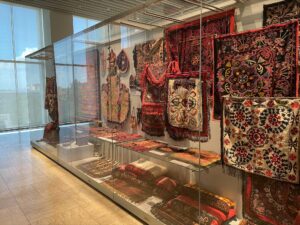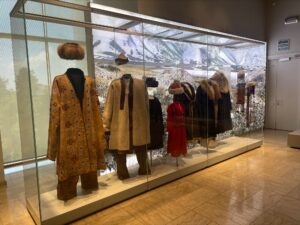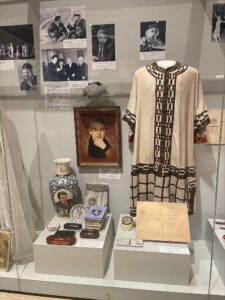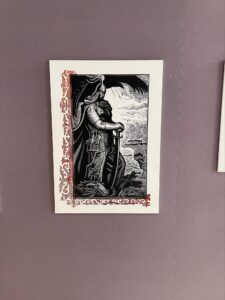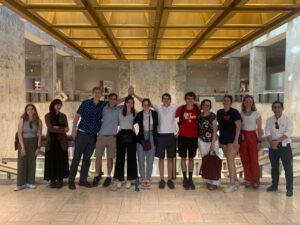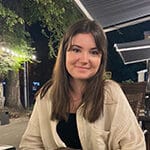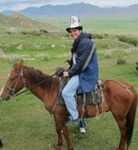The National Historical Museum of the Kyrgyz Republic is a great place to get started when visiting Kyrgyzstan. The museum’s extensive collection of more than 90,000 exhibits includes artifacts from Kyrgyzstan’s prehistory, from its ancient Silk Road era, Soviet-era history, and modern state. Culture exhibits focus on Kyrgyz nomadic culture, traditional handicrafts, and the musical instruments used to make Kyrgyz folk music. In other words, the museum covers just about everything in a fairly compact building.
The museum offers an opportunity to learn about the Kyrgyz people and their rich history, including their struggles for independence and modern efforts to revive and support a unique cultural identity. With interactive exhibits and most artifacts labeled and described in English, foreign visitors can gain an excellent introduction to this unique and beautiful country.
History of the National Historical Museum of the Kyrgyz Republic
By Sophia Monte
The National Historical Museum was founded in 1925 (then called the Central Museum of Kyrgyzstan) with the intention of storing important historical and cultural artifacts of Kyrgyzstan. It was first opened to visitors in 1927, located at the site of Commander M.V. Frunze’s childhood home. Frunze, born in Kyrgyzstan, played such an important role in early Soviet politics and military campaigns that the city was actually renamed for him by the Soviets and was only renamed again to Bishkek in 1991. The initial location of the museum at his former home shows the importance that both his history and the museum itself were given.
In 1984, the museum’s current premises, in the very heart of the city, were constructed, and from 2016-2021 the museum underwent major renovations. The first phase of reconstruction was funded by the Turkish International Cooperation and Development Agency and the second phase was funded by the Kyrgyz State Treasury. The museum has international connections to the German government and a German company, Vitrinen-und Glasbau REIER GmbH, which provided equipment during the reconstruction of the museum from 2016-2021. On the third floor of the National Historical Museum, there are a number of poster boards commemorating the role of Kyrgyz-German relations in the reconstruction of the museum.
The work, however, was surrounded by corruption scandals and government mismanagement. Renovations that were supposed to be completed in 18 months were finished only after five years. Indeed, it seems that some parts of the museum were left unfinished. There is no gift shop onsite despite there originally being a gift shop tab on the museum’s website.
When the museum finally reopened in 2021, it also adopted its current name, The National Historical Museum of the Kyrgyz Republic. It had previously been named The State Historical Museum and there are still many resources online that call it this – but know that they are one and the same museums.
Exploring the National Historical Museum of the Kyrgyz Republic in 2022
By Sophia Monte
The museum presents the path of the Kyrgyz nation from its founding to current times. Its exhibition covering stories of nation building is especially strong and devotes significant attention to Manas, one of the most important historical figures in Kyrgyz memory and history who is credited with uniting the lands of the Kyrgyz nation under his leadership. The museum also emphasizes Kyrgyz achievements and contributions in various fields under Soviet sovereignty in Kyrgyzstan. Perhaps the largest collection of artifacts in the museum are those covering the transition of the Kyrgyz nation to a protectorate of first the Russian Empire and then to part of the Soviet Union. Explanations of these periods of transition for Kyrgyzstan are balanced and provide an relatively unbiased overview of the effects of Soviet sovereignty over Kyrgyzstan.
Most exhibits have English descriptions available. While some may be slightly confusing and long-winded, they are still successful in communicating the needed information. Unfortunately, there were no English descriptions of Kyrgyzstan’s political history following its independence from the Soviet Union in 1991. In fact, coverage of post-Soviet political developments is generally sparse, with only a few displays of documents and news media covering the tumultuous political landscape of post-Soviet Kyrgyzstan.
Overall, the premises have a modern feel and incorporate modern elements such as touch screen displays that play audio, video, and text. These displays include an audio recording of the epic of Manas and an interactive touchscreen that invites the user to place objects inside a traditional yurt that were particularly effective and engaging uses of technology. The museum had a balanced number of artifacts in glass display cases as well as larger-scale displays such as a traditional yurt and life-sized stuffed horses displaying traditional Kyrgyz equipment for horses. The museum is aesthetically beautiful in its presentation of Kyrgyz history and culture which contributes to the overall impact of the museum. One aesthetically strong display shows a number of Chingiz Aitmatov’s books translated into different languages and is especially successful in conveying the widespread impact of Aitmatov’s work.
A Trip to the Museum (2012)
By Peter Bourgelais
One of the best places to visit first in Bishkek is the History Museum in Ala-Too Square. A tour of the museum gives you a quick overview of Kyrgyz history from the Stone Age to the present, and there are always new exhibits on various topics.
The standard guided tour starts at the third floor with prehistoric Kyrgyzstan. Many of these early exhibits are the kind of thing you would find in most museums dealing with prehistory: reconstructions of faces, petroglyphs, artist’s depictions, items from excavations of simple burial mounds, etc. But then we get to the Yenisei Kyrgyz, the Karakhanid Khaganate (with a reconstruction of the Burana Tower), the Mongol invasion, and finally “наша девушка,” a female mannequin dressed in traditional Kyrgyz garb next to a yurt and various other national symbols.
The second floor focuses on the history of the old Kyrgyz SSR and Kyrgyzstan after independence. Naturally, there are plenty of statues of Lenin, Marx, and Engels, as well as exhibits on the Russian Civil War and World War II. The newest additions include an exhibit on Xinjiang Province just over the border in China, and an exhibit on the April 2010 protests that overthrew the Bakiev regime.
The first floor is usually where the special exhibits are set up. There was nothing there the last time I came, but past exhibits have dealt with calligraphy in various periods of Kyrgyz history (which included several examples of ancient Syrian Aramaic, a legacy of Kyrgyzstan’s place on the Silk Road), and an exhibit on the celebrated Kyrgyz author Chinggis Aitmatov.
A trip to the Historical Museum was one of the standard excursions that we SRAS students at the London School started with our terms with – and with good reason. Although it’s only three floors, the museum introduced many themes and images that you will come back to again and again during your stay.
Planning Your Visit to the Museum
By Sophia Monte
The museum website is available only in Russian and Kyrgyz but is navigable and attractive if you speak either or those languages or use Google translate.
Entrance is highly affordable at just under $4 for foreigner ticket, which includes a guided tour. Tours are offered in Russian twice a day and Kyrgyz seven times daily Tuesday-Sunday. The facility is closed on Mondays. There are no tours in English given by the museum, but they can be arranged through private companies like Bishkek Walks.
The National Historical Museum provides an overview of a multitude eras of Kyrgyz history and elements of its culture. The broad scope of the content of the museum’s exhibitions only support the effectiveness of its presentation of the major historical and cultural developments of Kyrgyzstan. Despite a few imperfections, the newly renovated National Historical Museum is well worth visiting for those wanting to better understand Kyrgyzstan’s culture and place in history.
Other Attractions in Bishkek
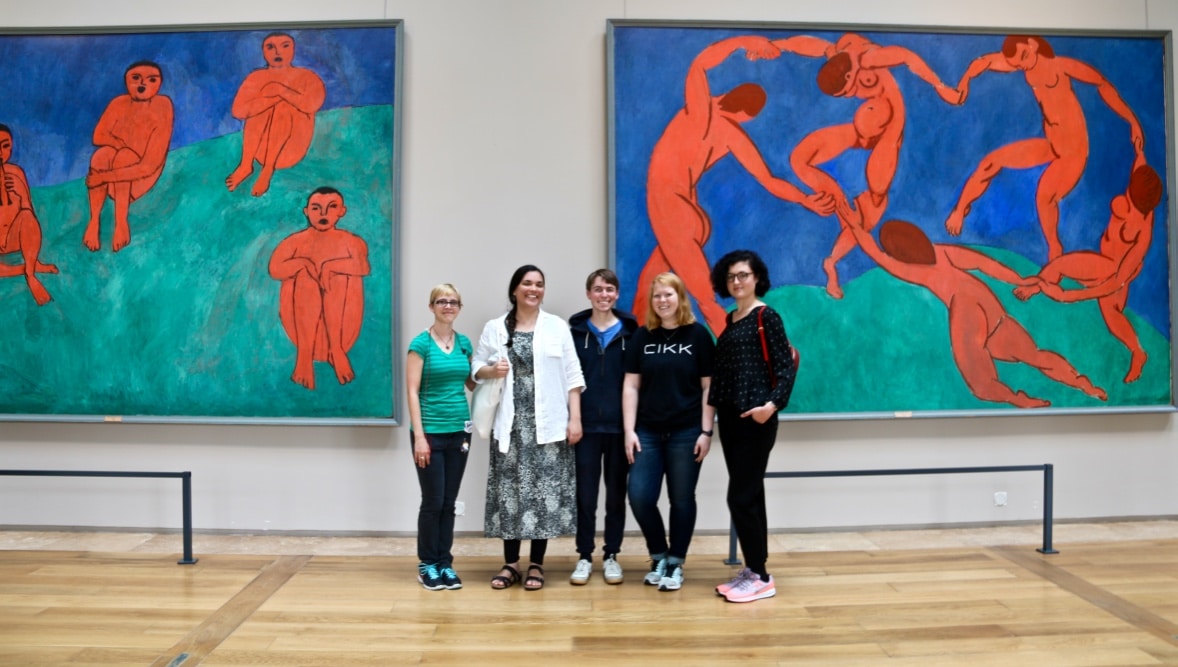
Museums as Self-Care
In 2018, doctors in Montreal began prescribing visits to the Montreal Museum of Fine Arts (MMFA) for patients experiencing depression, anxiety, and other health issues. This innovative approach to mental health treatment was launched under the initiative of the MMFA in collaboration with Médecins francophones du Canada (MFdC). The program allows physicians to provide patients […]
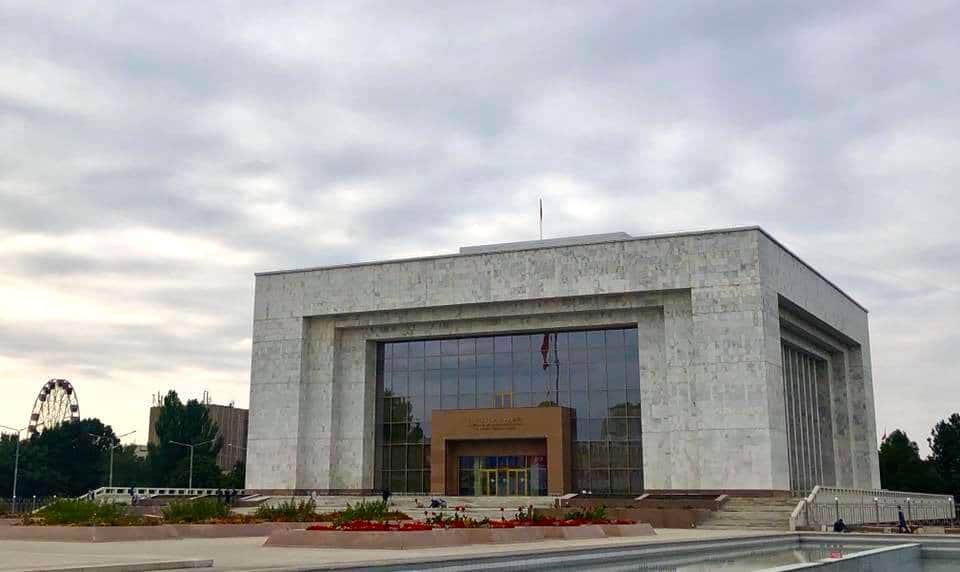
Guide to Bishkek’s Top Museums for Students
The Kyrgyz were largely a nomadic civilization up until the 20th century. The city of Bishkek has a number of museums documenting this fascinating history as well as the development of the arts and sciences in Kyrgyzstan. These museums were mostly established during (and today are often unchanged from) Soviet times, including a number of […]
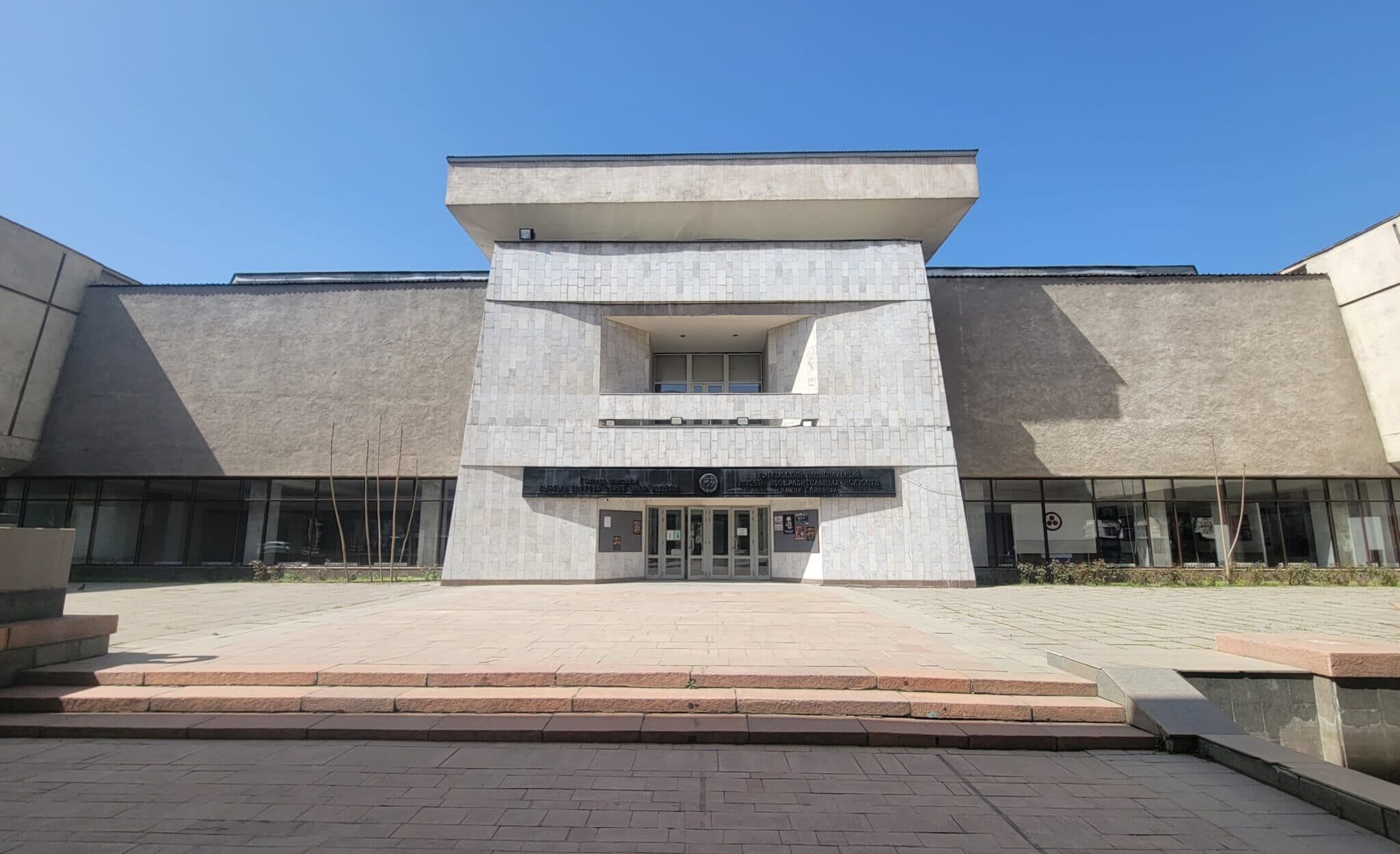
The Kyrgyz National Museum of Fine Arts in Bishkek
The Kyrgyz National Museum of Fine Arts in Bishkek showcases native art forms as well as painting, sculpture, and other works, highlighting those created by Kyrgyz artists. The museum is centrally located and is perfect for a day trip with an abundance of restaurants and cafes nearby. The article below will tell the history of […]
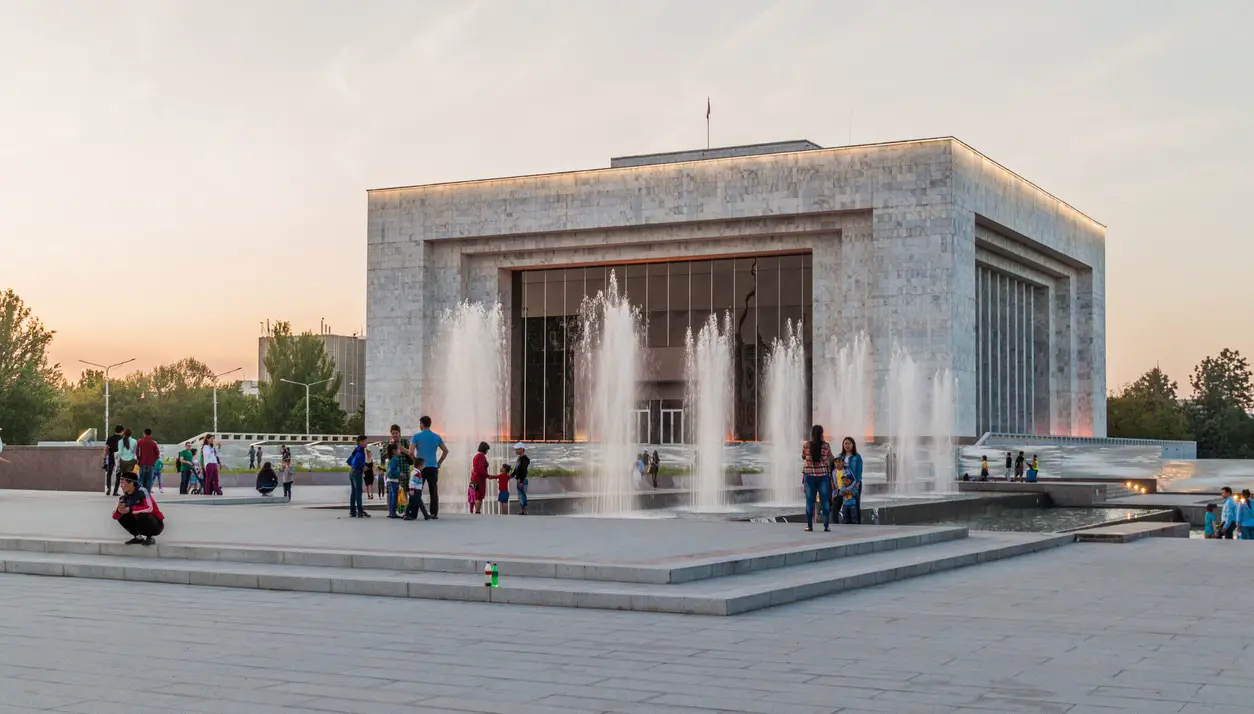
The National Historical Museum of the Kyrgyz Republic
The National Historical Museum of the Kyrgyz Republic is a great place to get started when visiting Kyrgyzstan. The museum’s extensive collection of more than 90,000 exhibits includes artifacts from Kyrgyzstan’s prehistory, from its ancient Silk Road era, Soviet-era history, and modern state. Culture exhibits focus on Kyrgyz nomadic culture, traditional handicrafts, and the musical […]

The Evolution of Art and Painting in Central Asia
While Central Asia has a long, rich history, the modern nations of the region are a direct result of 20th century colonization. Prior to Soviet interference, the many ethnic groups and distinct societies of the region were loosely grouped under the geographic term of Turkestan. Under Soviet control, the region was divided into the Turkmen […]


